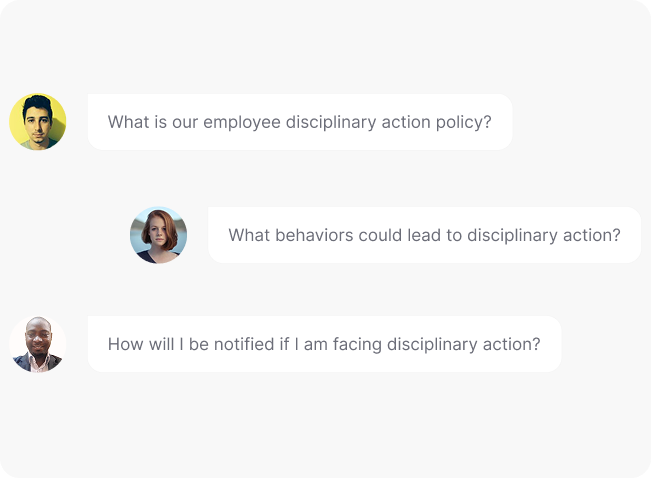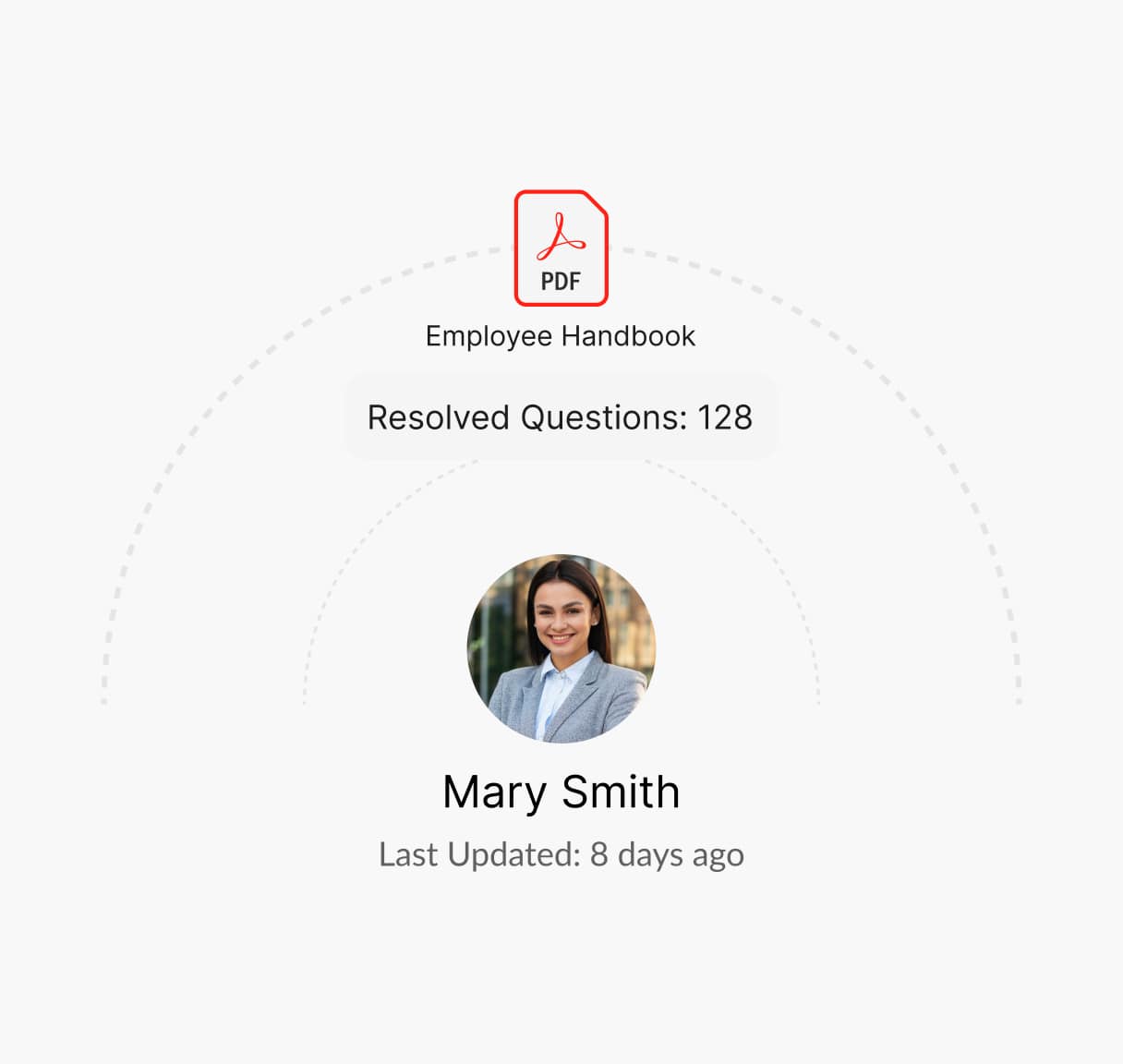Everything You Need to Know About Employee Disciplinary Action Policy
Addressing misconduct consistently is key to maintaining a productive workplace. A well-defined Employee Disciplinary Action Policy streamlines corrective actions, promoting fairness and supporting HR teams in enforcing company standards.

What is an Employee Disciplinary Action Policy?
An Employee Disciplinary Action Policy is a formal HR framework that details the procedures for addressing employee misconduct, policy violations, or performance issues. It outlines a progressive discipline process—ranging from verbal warnings and written notices to suspension or termination—ensuring consistency and legal compliance in handling infractions.
By providing clear guidelines, this policy promotes transparency, reinforces accountability, and protects the organization from potential legal disputes. A robust disciplinary action policy not only maintains workplace standards but also encourages corrective behavior, contributing to a culture of continuous improvement and professionalism.
Guidelines for Creating an Employee Disciplinary Action Policy
A well-structured Employee Disciplinary Action Policy ensures fairness and consistency in addressing workplace issues. Here’s how to craft it:
Clarify the Purpose of the Policy
Explain that the policy is designed to uphold organizational standards, ensure fairness, and provide opportunities for corrective action before more severe consequences.
Define Types of Misconduct
List common violations, such as attendance issues, performance deficiencies, harassment, or insubordination, to set clear expectations for employee behavior.
Outline a Progressive Discipline Process
Detail the step-by-step approach, starting with verbal warnings, followed by written warnings, suspension, and termination if necessary. Specify when immediate termination may apply for severe misconduct.
Include Documentation Requirements
Emphasize the importance of thorough documentation at each stage, including dates, incidents, and actions taken to ensure transparency and legal protection.
Comply with Employment Laws
Ensure alignment with labor laws such as the National Labor Relations Act (NLRA) and Occupational Safety and Health Act (OSHA), protecting both the organization and employees.
Train Managers on Disciplinary Procedures
Include provisions for training supervisors and HR personnel on how to administer discipline fairly, legally, and effectively.
What is Covered in an Employee Disciplinary Action Policy?
An effective employee disciplinary action policy should include the following:
Categories of Misconduct
Define the different categories of misconduct, such as attendance violations, performance issues, misconduct, insubordination, or other breaches of company rules.
Progressive Discipline Process
Outline the steps in the progressive discipline process, from verbal warnings to written warnings, suspension, and termination, depending on the severity of the offense.
Employee Rights and Appeals
Clarify employees’ rights during the disciplinary process, including their ability to appeal decisions or present evidence in their defense.
Disciplinary Procedures and Investigation
Describe the investigation procedures that will be followed before issuing any disciplinary action, ensuring fairness and thoroughness in addressing allegations.
Role of Managers and HR
Clarify the responsibilities of managers and HR in enforcing the policy and handling disciplinary actions, ensuring consistency across departments.
Legal Compliance
Reference to relevant employment laws, such as the Fair Labor Standards Act (FLSA) or other state-specific regulations, to ensure the disciplinary process complies with legal requirements.
Types of Misconduct
Define categories of violations, such as attendance issues, policy breaches, workplace harassment, or performance-related concerns.
Appeal Process
Outline how employees can contest disciplinary actions, including the steps for submitting an appeal and the review process.
Confidentiality and Record-Keeping
Explain how disciplinary records will be documented, stored, and who has access to them to ensure privacy and compliance.
Need help creating a employee disciplinary action policy?
How Winslow Helps HR Teams Streamline Employee Disciplinary Action Policy Management
Disciplinary action processes must be clear and effective to ensure fairness and consistency. Winslow makes managing these policies easier:

Instant answers anytime
Winslow makes your Employee Disciplinary Action Policy easily accessible via Slack, Teams, or email. Employees and managers can instantly find guidelines on performance issues, misconduct consequences, and corrective actions—ensuring clarity, consistency, and compliance across your organization.
Personalized Support
Winslow provides instant answers to all HR questions, including those about your Employee Disciplinary Action Policy, ensuring clarity on procedures and expectations.


Analytics and Insights
Winslow tracks policy-related queries, helping HR teams identify trends and common concerns. This data enables organizations to refine their policy, improve reporting channels, and address recurring issues proactively.
Streamline Employee Disciplinary Action Policy Management with Winslow
Winslow helps HR teams manage and address disciplinary action-related queries quickly and efficiently, ensuring fairness, consistency, and compliance across the organization.
Frequently asked questions
Have further questions about Winslow, contact us at sales@usewinslow.com
What constitutes misconduct under the Employee Disciplinary Action Policy?
Misconduct includes behaviors like violation of company rules, insubordination, harassment, theft, or misuse of company resources. It may also include repeated tardiness, failure to meet performance standards, and violations of ethical guidelines.
How should HR document disciplinary actions to ensure compliance?
HR should maintain thorough and accurate records of all disciplinary actions, including verbal warnings, written notices, and final warnings. This documentation should include the incident details, the steps taken, and any corrective action, ensuring it is signed by both the employee and HR.
What steps should be taken when an employee violates company policies?
HR should investigate the violation thoroughly, determine whether it’s a first-time or repeat offense, and apply the appropriate disciplinary measure as outlined in the policy. Progressive discipline should be followed, starting with verbal warnings and escalating if necessary.
How can HR ensure consistency in applying disciplinary measures across the organization?
To ensure consistency, HR should regularly review and update the disciplinary policy, train managers to follow standardized procedures, and keep detailed records of all actions taken. Ensuring fairness across all employees is crucial to prevent claims of favoritism or discrimination.
What are the legal considerations HR must keep in mind during the disciplinary process?
HR must ensure the disciplinary actions comply with federal and state labor laws, such as anti-discrimination laws and employment contracts. The process must be non-discriminatory, and HR should avoid termination or punishment based on protected characteristics like race, gender, or age.
Additional resources
Device Usage Policy
Managing employee leave effectively is vital for maintaining workforce productivity and compliance....
Learn moreconfidentiality policy
Protecting sensitive information is crucial. A clear Confidentiality Policy outlines guidelines for...
Learn moreclaim reimbursement
Ensuring fair compensation for expenses is key. A clear Claim Reimbursement Policy...
Learn more




